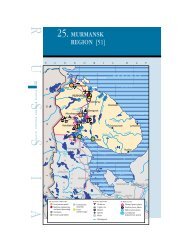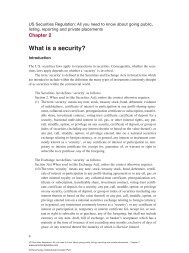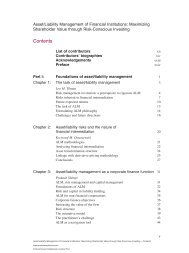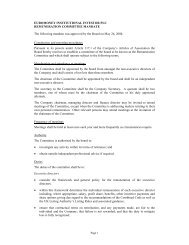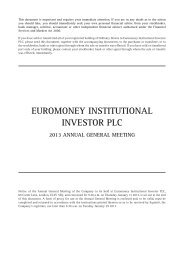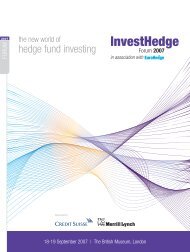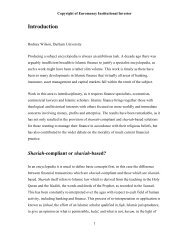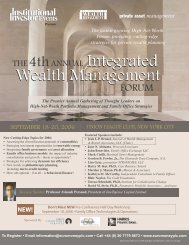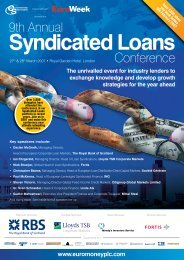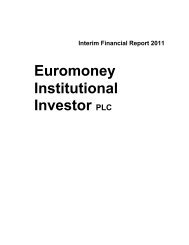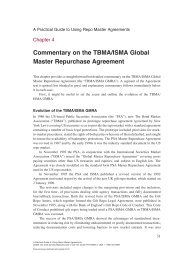Annual Report & Accounts 2012 - Euromoney Institutional Investor ...
Annual Report & Accounts 2012 - Euromoney Institutional Investor ...
Annual Report & Accounts 2012 - Euromoney Institutional Investor ...
Create successful ePaper yourself
Turn your PDF publications into a flip-book with our unique Google optimized e-Paper software.
<strong>Euromoney</strong> <strong>Institutional</strong> <strong>Investor</strong> PLC <strong>Annual</strong> <strong>Report</strong> and <strong>Accounts</strong> <strong>2012</strong><br />
www.euromoneyplc.com<br />
Notes to the Consolidated<br />
Financial Statements continued<br />
19 Financial instruments and risk management continued<br />
As at September 30 <strong>2012</strong>, the aggregate amount of unrealised gains under forward foreign exchange contracts deferred in the fair value reserve<br />
relating to future revenue transactions is £2,759,000 (2011: losses £4,003,000). It is anticipated that the transactions will take place over the next<br />
18 months at which stage the amount deferred in equity will be released to the Income Statement.<br />
As at September 30 <strong>2012</strong>, the aggregate amount of unrealised losses under ineffective cash flow hedges still in place at the year end is £nil (2011:<br />
£332,000), which have been recognised in the Income Statement.<br />
iii) Interest rate risk<br />
The group’s borrowings are in both sterling and US dollars with the related interest tied to LIBOR. This results in the group’s interest charge being at risk<br />
to fluctuations in interest rates. It is the group’s policy to hedge approximately 80% of its interest exposure, converting its floating rate debt into fixed<br />
debt by means of interest rate swaps. The maturity dates are spread in order to avoid interest rate basis risk and also to negate short-term changes in<br />
interest rates. The predictability of interest costs is deemed to be more important than the possible opportunity cost foregone of achieving lower interest<br />
rates and this hedging strategy has the effect of spreading the group’s exposure to fluctuations arising from changes in interest rates and hence protects<br />
the group’s interest charge against sudden increases in rates but also prevents the group from benefiting immediately from falls in rates.<br />
The group’s exposures to interest rates on financial assets and financial liabilities are detailed in the liquidity risk section on page 98.<br />
Interest rate sensitivity analysis<br />
The sensitivity analysis below has been determined based on the exposure to interest rates for both derivative and non-derivative instruments at the<br />
balance sheet date. For floating rate liabilities, the analysis is prepared assuming the amount of liability outstanding at the balance sheet date was<br />
outstanding for the whole year. A 100 basis point increase or decrease is used when reporting interest rate risk internally to key management personnel<br />
and represents the directors’ assessment of a reasonably possible change in interest rates at the reporting date.<br />
If interest rates had been 100 basis points higher or lower and all other variables were held constant, the group’s:<br />
● Profit for the year ended September 30 <strong>2012</strong> would decrease or increase by £338,000 (2011: £121,000). This is mainly attributable to the group’s<br />
exposure to interest rates on its variable rate borrowings; and<br />
● Other equity reserves would decrease or increase by £561,000 (2011: £934,000) mainly as a result of the changes in the fair value of interest rate<br />
swaps.<br />
The group’s sensitivity to interest rates has not materially changed during the period due to the group benefiting from similar levels of fixed rates.<br />
Interest rate swap contracts<br />
Under interest rate swap contracts, the group agrees to exchange the difference between fixed and floating rate interest amounts calculated on agreed<br />
notional principal amounts. Such contracts enable the group to mitigate the risk of changing interest rates on the fair value of issued fixed rate debt<br />
and the cash flow exposures on the issued variable rate debt. The fair value of interest rate swaps at the reporting date is determined by discounting<br />
the future cash flows using the yield curves at the reporting date and the credit risk inherent in the contract, and is disclosed below.<br />
96






